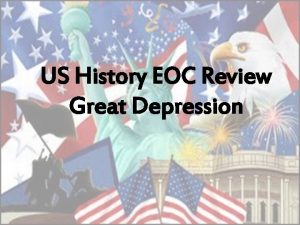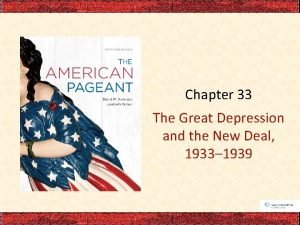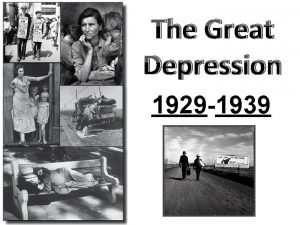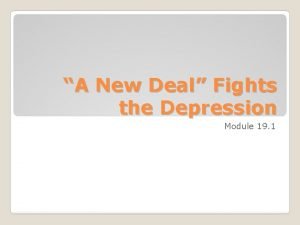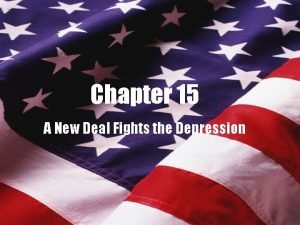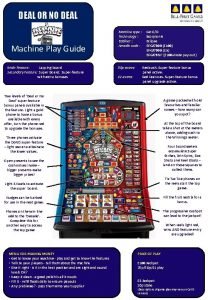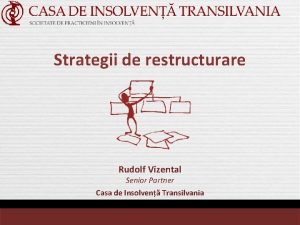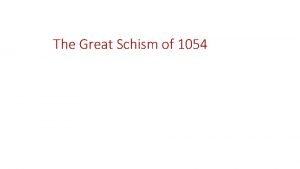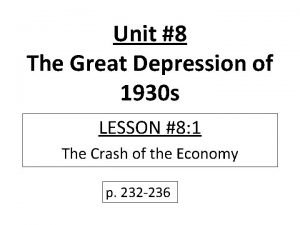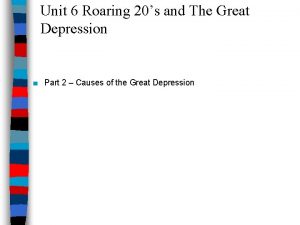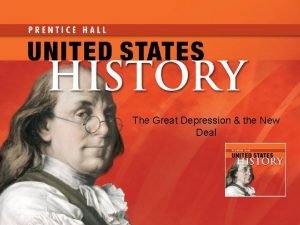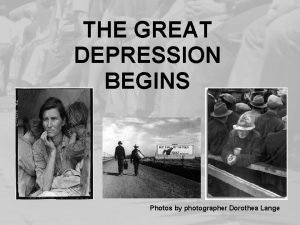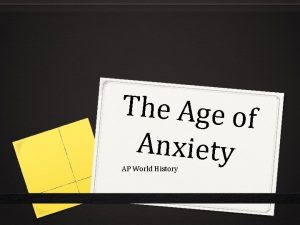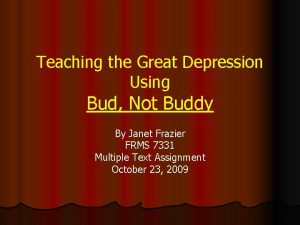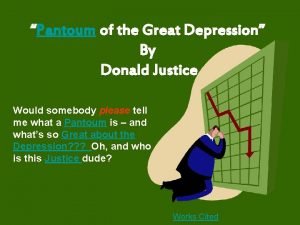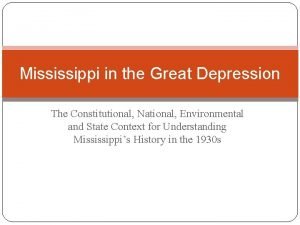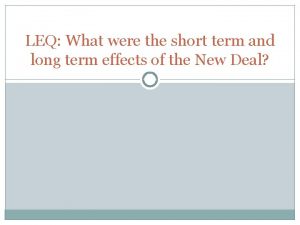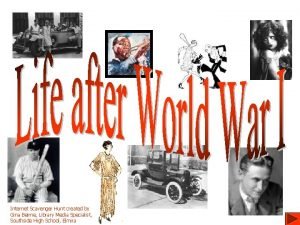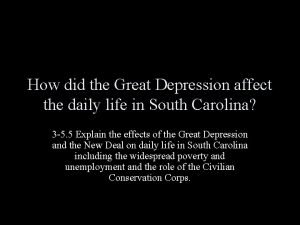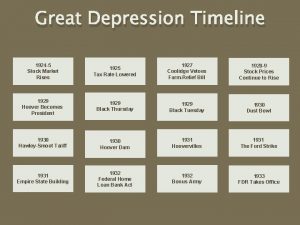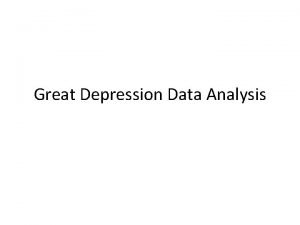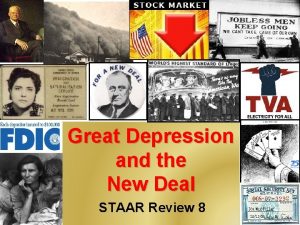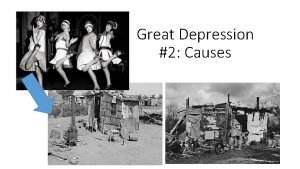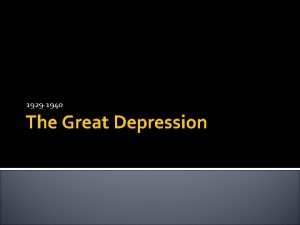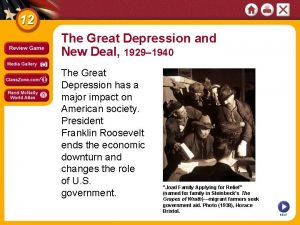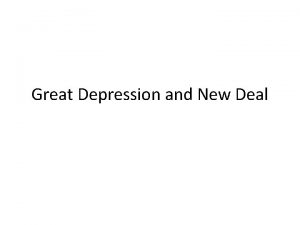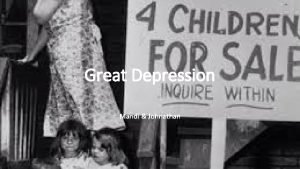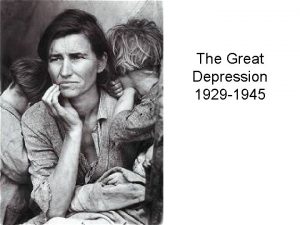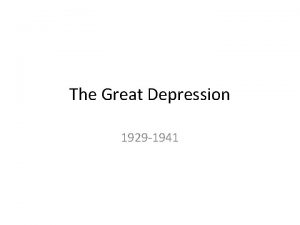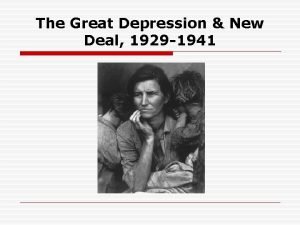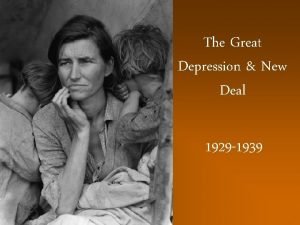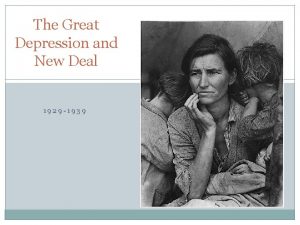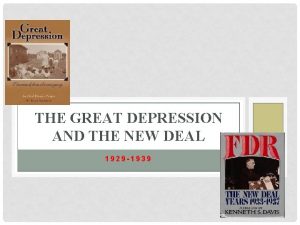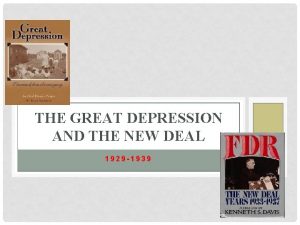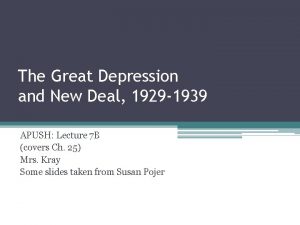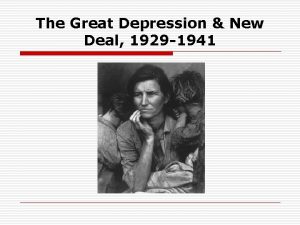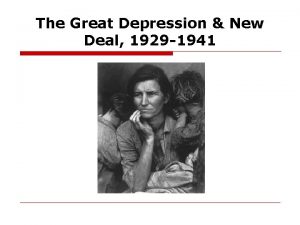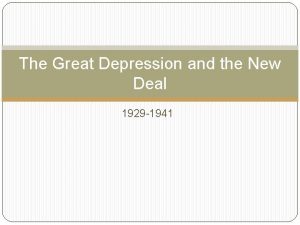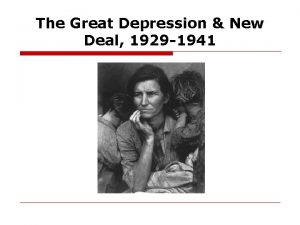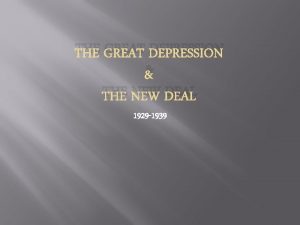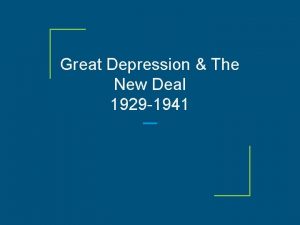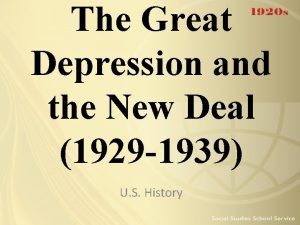THE GREAT DEPRESSION 1929 1940 New Deal Legislation































- Slides: 31

THE GREAT DEPRESSION 1929 -1940


New Deal Legislation (Alphabet Soup) n n Hundred Days – period in 1933 when FDR pushes programs through Congress FDR passed laws – 3 R’s – Relief, Recovery and Reform q q q Relief – provides jobs to unemployed Recovery – government spending to put money back in the economy Reform – changes laws to fix and prevent another depression

Relief Ø Relief Legislation 1. Civilian Conservation Corp (CCC) – jobs for young men – planting trees and cleaning up forests 2. Public Works Administration (PWA) – jobs building schools, roads, bridges


CCC CAMP

n n 3. Works Progress Administration (WPA) – jobs by hiring artists, writers and musicians to paint murals and produce plays. 4. Tennessee Valley Authority (TVA) – built dams to control floods and produce electricity


• Recovery n n n 1. Govt puts $ back into economy so the people will spend more. 2. National Recovery Administration – asked businesses to follow codes to regulate wages, working conditions, and prices but was found unconstitutional. 3. Agricultural Adjustment Acts – paid farmers to plant less in hope to increase crop prices. q *The public was outraged at the destruction of crops and animals in order to keep production down.

n REFORM 1. Federal Deposit Insurance Corporation (FDIC) – people won’t lose their savings if a bank fails 2. Securities and Exchange Commission (SEC) – created to watch over the stock market 3. National Labor Relations Act also known as Wagner Act – gave workers the right to form unions and collective bargaining


n n 4. Fair labor Standards – set a minimum wage and max work week 5. Social Security Act – one of the most important, gave workers unemployment insurance, old age pensions and $ to the ill and handicapped.




Unemployment Rate: 1929 -1943

Views of the New Deal Supporters n “The New Deal Coalition” q q q q Poor Urban dwellers (Catholics and Jews) African Americans Farmers / South Artists / Intellectuals Unions Elderly Opponents n n n Wealthy Business Owners Farmers (maybe in the MW and East)

THE SUPREME COURT n Challenges to the New Deal q q 1935: Schechter v. US: struck down NRA n “Sick chicken case” – Schechter brothers were accused of selling unhealthy chickens to buyers in violation of NRA Codes n NRA codes were written by business leaders, but if Pres. agreed with codes they could be given power of “law” n SC says Schechter was intra-state trade n separation of powers – FDR had taken legislative powers of Congress and was regulating trade within a state 1935: U. S. v Butler: struck down AAA n gov’t can’t tax one group (processors) to then give to farmers for not farming all of their land n Can tax, but the tax was coercive and led to unconstitutional ends n AAA is rewritten and passed again in 1938


FDR’s Court Packing Plan FDR wanted to increase the # of Supreme Court Judges from 9 to 15 to get his New Deal laws passed. q FDR was afraid the Supreme Court would find many of his programs unconstitutional q By increasing the # of judges he could appoint judges who would uphold his programs n Violates separation of powers q n Congress does not pass the Act Eventually FDR gets to appoint new judges

Criticisms of the New Deal

FDR’s Critics n Francis E. Townsend q Created an impossible plan n q 2% sales tax nationally Wanted to give elderly money n n Give $200 a month They would spend it to help economy

Father Charles E. Coughlin n Blamed business and bankers for Depression supported FDR, then calls him a Socialist q Wanted FDR to help but felt he went too far q Believes he is a puppet of business/bankers Used radio q Eventually claims it was Jewish business and bank owners who were to blame q becomes too radical, Church tells him to stop

Huey “Kingfish” Long n n n Senator from Louisiana “Share the Wealth” q income and inheritance taxes on wealthy Wanted to guarantee Americans: q $2, 500 a year q A car and home q College education All The Kings Men – News “All The Kings Men” Trailer

General Criticisms n n Some projects did not have lasting effects Gov’t was too involved in economy q n END OF LAISSEZ FAIRE Heavier taxes = less money for consumers to spend

Deficit Spending n Deficit Spending q q The government was spending more money than it was collecting through taxes Leads to heavy debt How will gov’t pay off the debt? Worried the gov’t was becoming too large n “Welfare state” – people are relying too much on the gov’t

Critics of the New Deal n n n Some people felt FDR was acting as a dictator Some felt the govt isn’t doing enough Big Business owners dislike ND b/c it was Pro-Union Women – no programs specifically for them, and paid lower wages Blacks – no hiring “rules” and programs are segregated q AAA paid money to landowners not sharecroppers

New Deal Controversy Ø FDR is elected 4 times! Ø Ø 1932, 1936, 1940, 1944 22 nd Amendment (1951) Ø A person can only be elected to the presidency 2 times

Legacy and Views of the New Deal

LEGACY OF NEW DEAL n n n Government’s role changed: q President and Fed. Gov’t becomes more powerful! q “Broker State” n Fed. Gov’t assists groups who are able to organize and exercise power(voting) to demand government action q Too many people rely on gov’t for job and $ Minorities: mixed results: women & blacks in FDR’s gov’t; discrimination from New Deal Continues the “reform tradition” Populists and Progressives Capitalism “saved”: Did NOT end the Great Depression (WWII did) q It helped Americans cope!

Political “Flip-Flop”: n Democratic Party q q n used to be: Jefferson’s vision of a smaller gov’t, not heavily involved in people’s lives Now: more gov’t. involvement, higher taxes, more spending, actively help the poor and less fortunate Republican Party: q q used to be: stronger more powerful central gov’t, support economic growth: Federalists, Whigs Now: gov’t is too big, interferes too much in people’s lives, need to cut spending and taxes
 Great depression vocabulary
Great depression vocabulary What is the main idea of this cartoon?
What is the main idea of this cartoon? Chapter 33 the great depression and the new deal
Chapter 33 the great depression and the new deal Black tuesday great depression
Black tuesday great depression Stock market crash 1929 political cartoon
Stock market crash 1929 political cartoon A new deal fights the depression
A new deal fights the depression Soil conservation and domestic allotment act
Soil conservation and domestic allotment act A great deal vs a great many
A great deal vs a great many Deal or no deal machine
Deal or no deal machine Asset deal vs share deal
Asset deal vs share deal Great stock market crash 1929
Great stock market crash 1929 Benjamin west contributed a great
Benjamin west contributed a great What was the deal breaker in the great schism
What was the deal breaker in the great schism Rarig great depression
Rarig great depression Great depression
Great depression The ingenious quarterback analysis
The ingenious quarterback analysis Foreclosure great depression
Foreclosure great depression Five effects of the great depression
Five effects of the great depression Five effects of the great depression
Five effects of the great depression How did the great depression impact the world
How did the great depression impact the world Great depression ap world history definition
Great depression ap world history definition Bud not buddy great depression
Bud not buddy great depression Pantoum of the great depression
Pantoum of the great depression The great depression summary
The great depression summary Cpi during the great depression
Cpi during the great depression Okies great depression
Okies great depression The great depression leq
The great depression leq Five effects of the great depression
Five effects of the great depression How did the great depression affect south carolina
How did the great depression affect south carolina Great depression timeline
Great depression timeline Great depression causes
Great depression causes Brief summary of the great depression
Brief summary of the great depression

